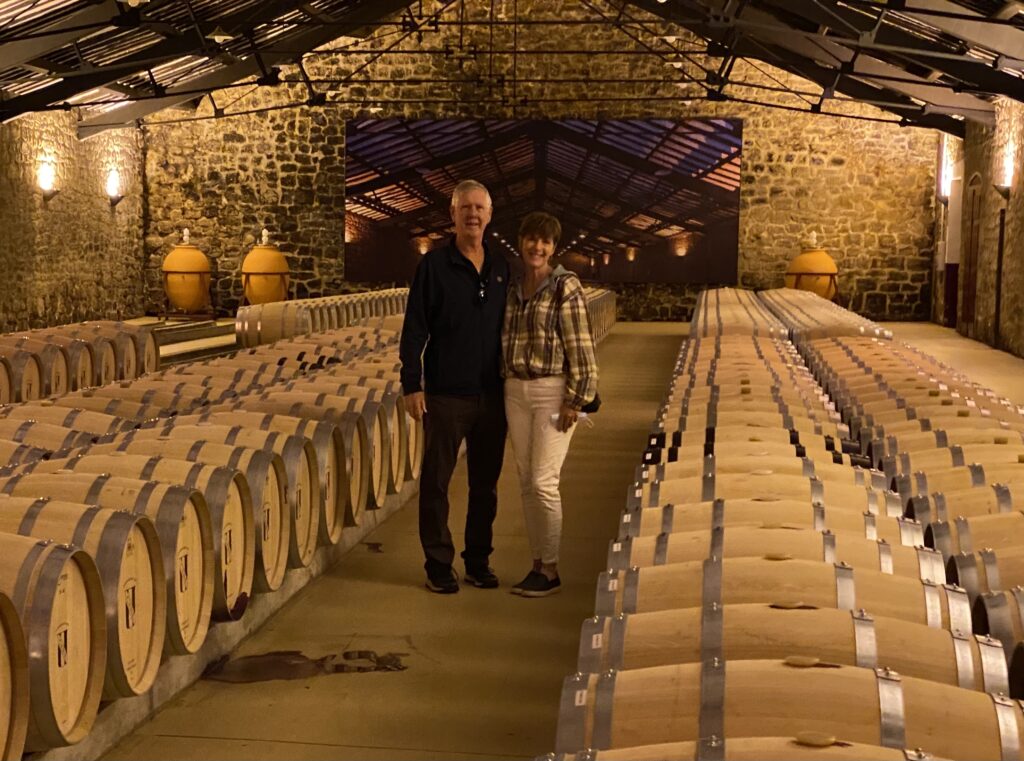
In our last blog, we looked at white wines other than the “usual suspects,” so today we’ll do the same with four readily available reds. Your homework: try at least one of these wines over the next month. Where else do you get to drink your homework?
Although most people associate Gamay with the insipid Nouveau Beaujolais, there are some serious Gamay wines. At its best, Gamay can produce nice, light-to-medium bodied wines with low tannins and alcohol, and bright red fruit. Just the thing to pair with fish, charcuterie, or a white meat, but also pleasant as an aperitif. The best Gamay comes from France, specifically from the ten Beaujolais “Cru” appellations. Four of those Cru produce bold, medium-bodied wines: Moulin-à-Vent, Juliénas, Morgon and Chénas. The other six Cru are lighter-bodied and less intense: Saint Amour, Fleurie, Chiroubles, Régnié, Côte de Brouilly and Brouilly. Oregon’s Willamette Valley also produces some excellent Gamays; our favorite there is Brickhouse.
Looking for something heartier and more intense - how about a Sangiovese? These medium-bodied wines have crisp acidity, sour cherry and herb notes, and substantial tannins. Just the thing for pasta with tomato-based sauce and grilled beef. The place to look is Tuscany, where you’ll find three different versions, each with its own personality:
- Chianti is the yardstick for Tuscan Sangiovese. Look for the Classico Riserva versions. There are stylistic variations among producers, so it pays to try several different ones. Our favorites include Badia a Coltibuono, Monsanto, and Rocca delle Macie.
- Brunello is more powerful and intense, with firmer tannins that beg for a thick, juicy steak. Brunello also pairs well with game and any tomato-based pasta. Rosso di Montalcino, often called the “baby Brunello,” is a lighter, less expensive version.
- Vino Nobile di Montepulciano has a style mid-way between its two cousins. It has softer tannins than Brunello and less acid than the Chianti Classico. Our favorite is Avignonesi.
Tempranillo is one of our go-to medium bodied reds. Although it’s produced in several Spanish regions, the most widely available selections come from Rioja. (Jim and Marisa are pictured above in CVNE’s Rioja winery.) Stylistically, Rioja is like a cross between Cabernet Sauvignon and Pinot Noir, with firm tannins, moderate acidity, spice, and interesting black and red fruits. While the Spanish love this wine with lamb and pork, give me a grilled ribeye or some good Texas BBQ. Or just pour a glass and munch on some Manchego cheese.
- Although there are four classifications, here’s all you need to know: get a Riserva or Gran Riserva. They’re aged longer and are more interesting and intense wines.
- It’s worth experimenting with several producers, as each has its own distinct style. Some of our favorites are CVNE Imperial, Baron de Ley, Marqués de Cáceres, and Marqués de Riscal. Interestingly, with some producers we prefer the Riserva version over the more expensive Gran Riserva.
And now for the big gun, Syrah. This is a full-bodied wine with firm tannins, bold flavors, and notes of black pepper, mushroom, and herbs. Syrah needs to be paired with an equally weighty dish, such as grilled beef or BBQ of all styles; it pairs poorly with fish and overwhelms lighter dishes. You’ll find two different styles, Rhône Valley and “New World” versions from Australia and California.
- Rhône Valley Syrahs tend to be intense, with muted fruits, earthy notes and firm tannins. The Northern Rhône has eight “cru” appellations, each with its own personality. The most prestigious (and expensive) are Côte Rôtie and Hermitage, each producing primarily Syrah-dominated blends. Cornas is the only cru that requires its wines to be made from 100 percent Syrah; its wines are robust but lack the sophistication of the more prestigious crus. Good producers include Paul Jaboulet Aîné, Auguste Clape, Chapoutier, and Chave.
- Australian Shiraz has its own unique style, generally well-oaked, oaked, and full-bodied, with milder tannins, strong black fruit, and spice (particularly black pepper). A good starting point is wines from the Barossa and McLaren Vale regions.
- California Syrah is the Goldilocks of the Syrah: it’s not too tannic, not too intense or aromatic, and just right for drinking upon release. Carneros is a sweet spot for quality California Syrah.
Now, get out there and drink your homework!
Cheers!
